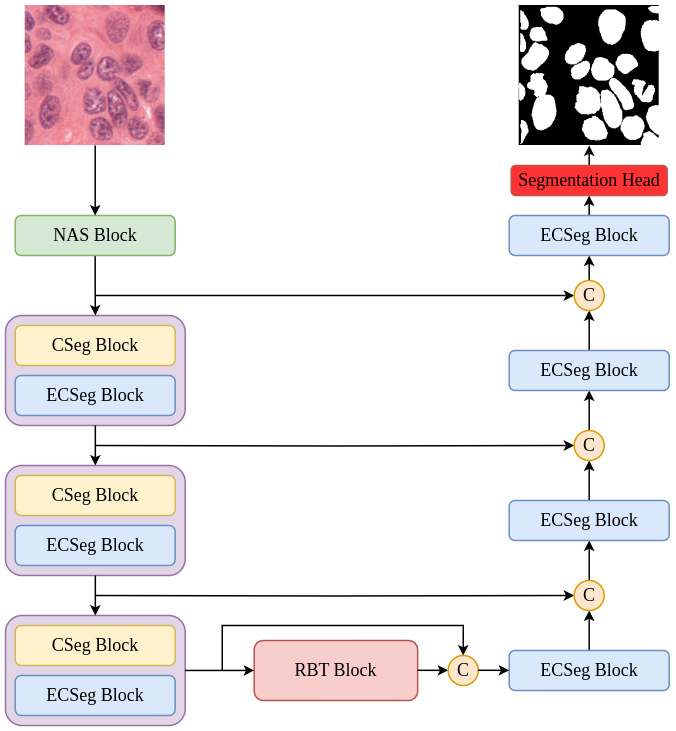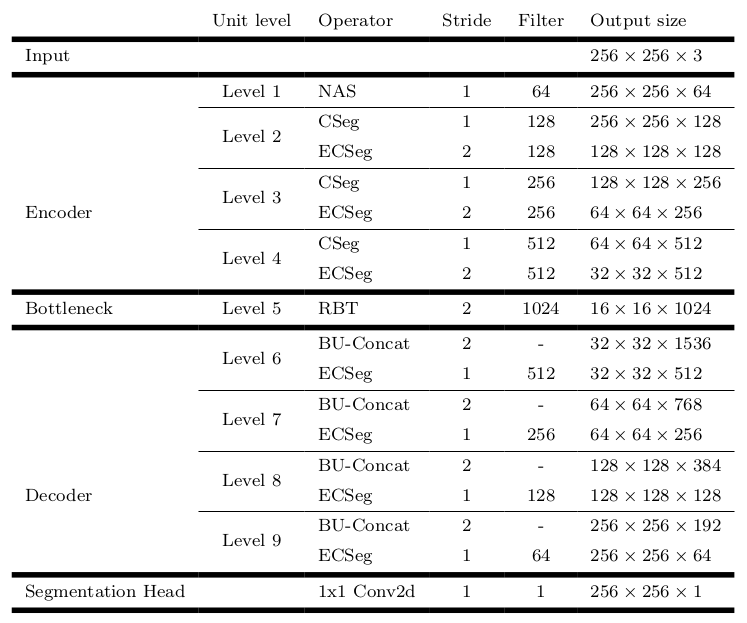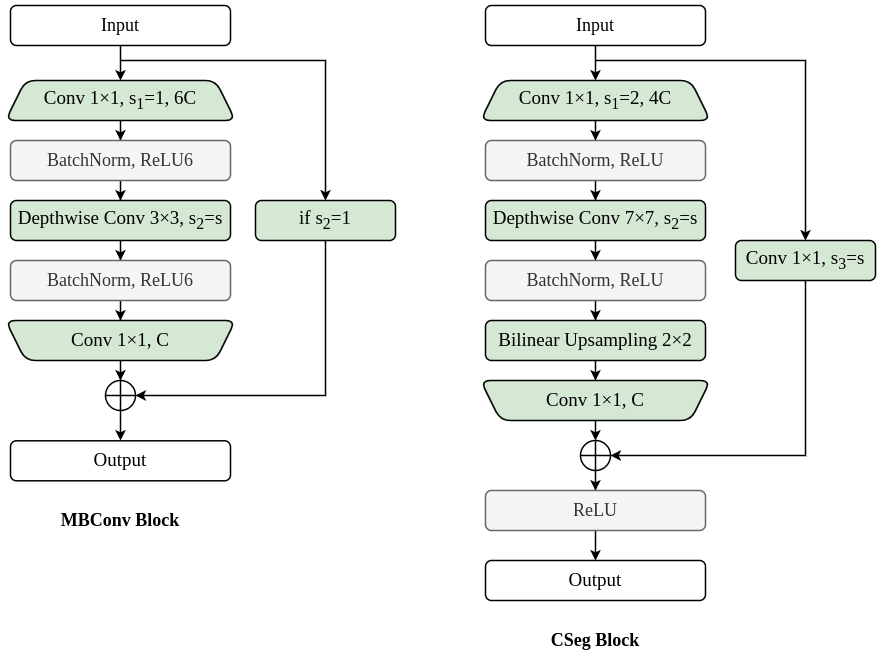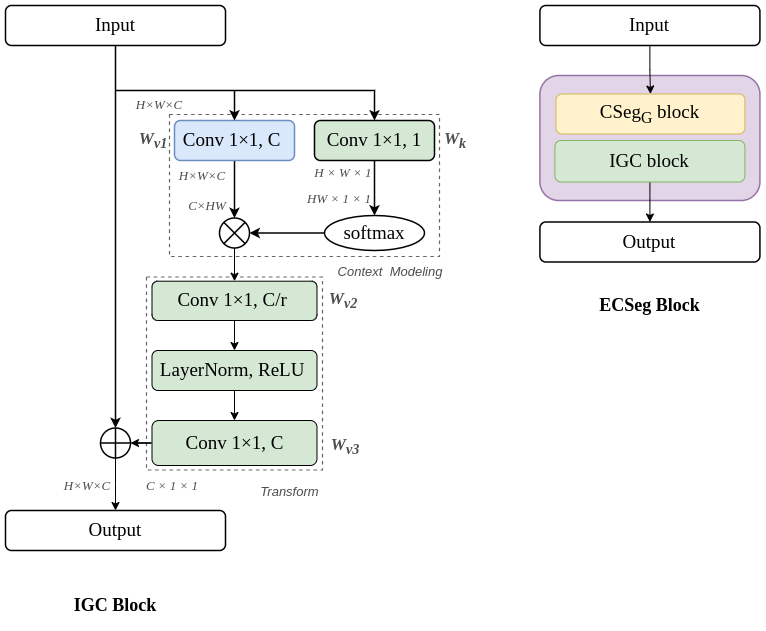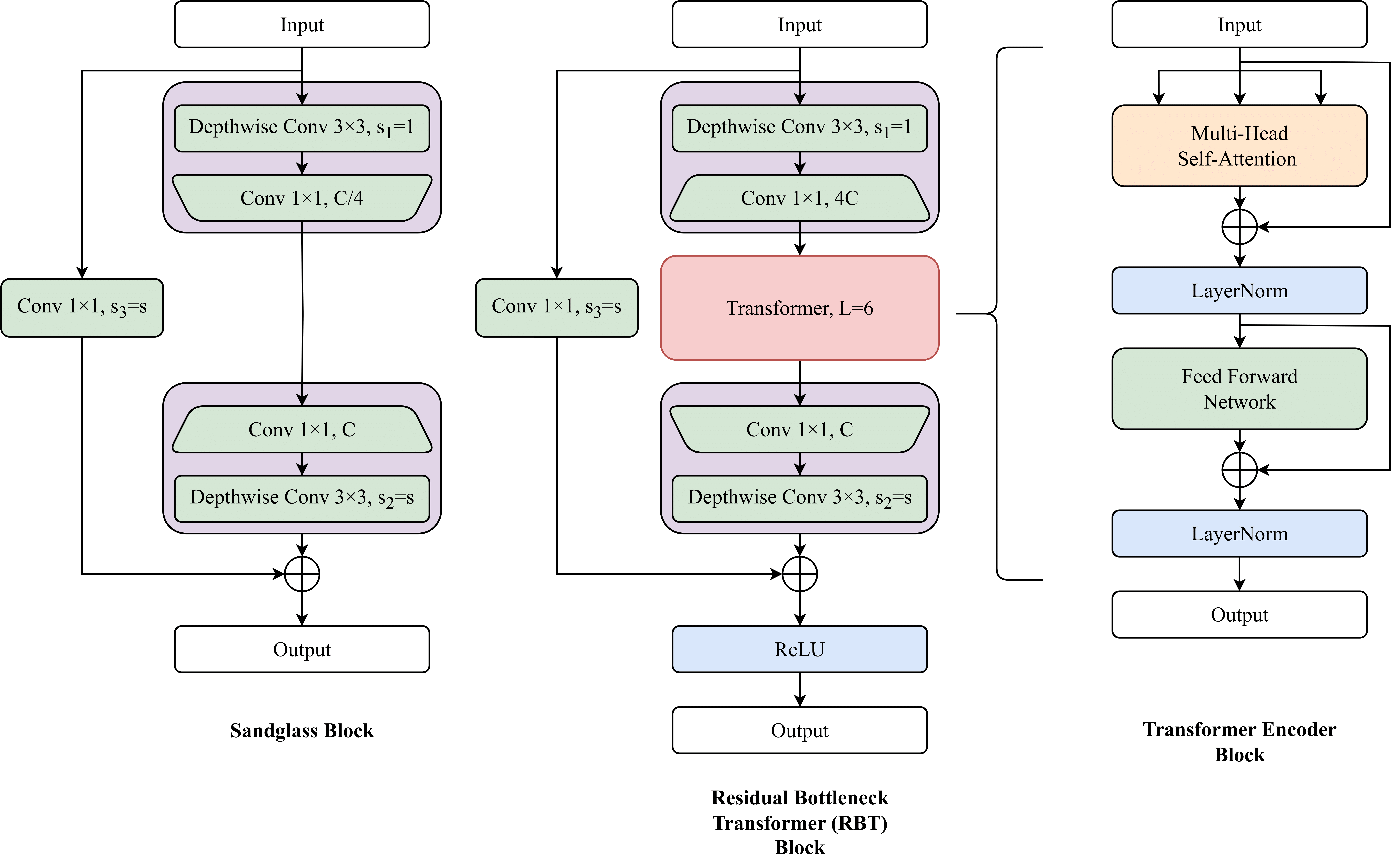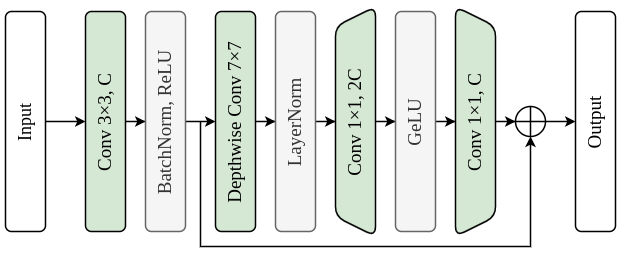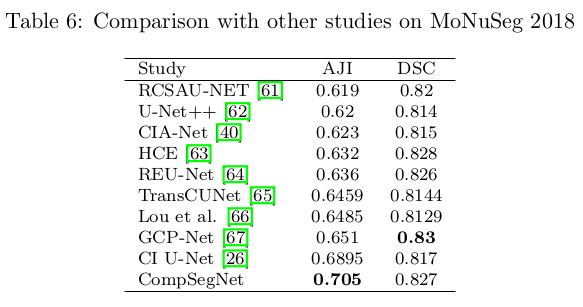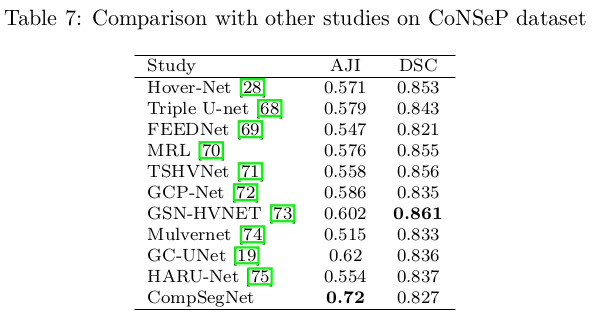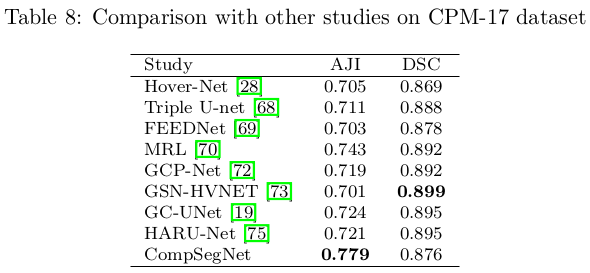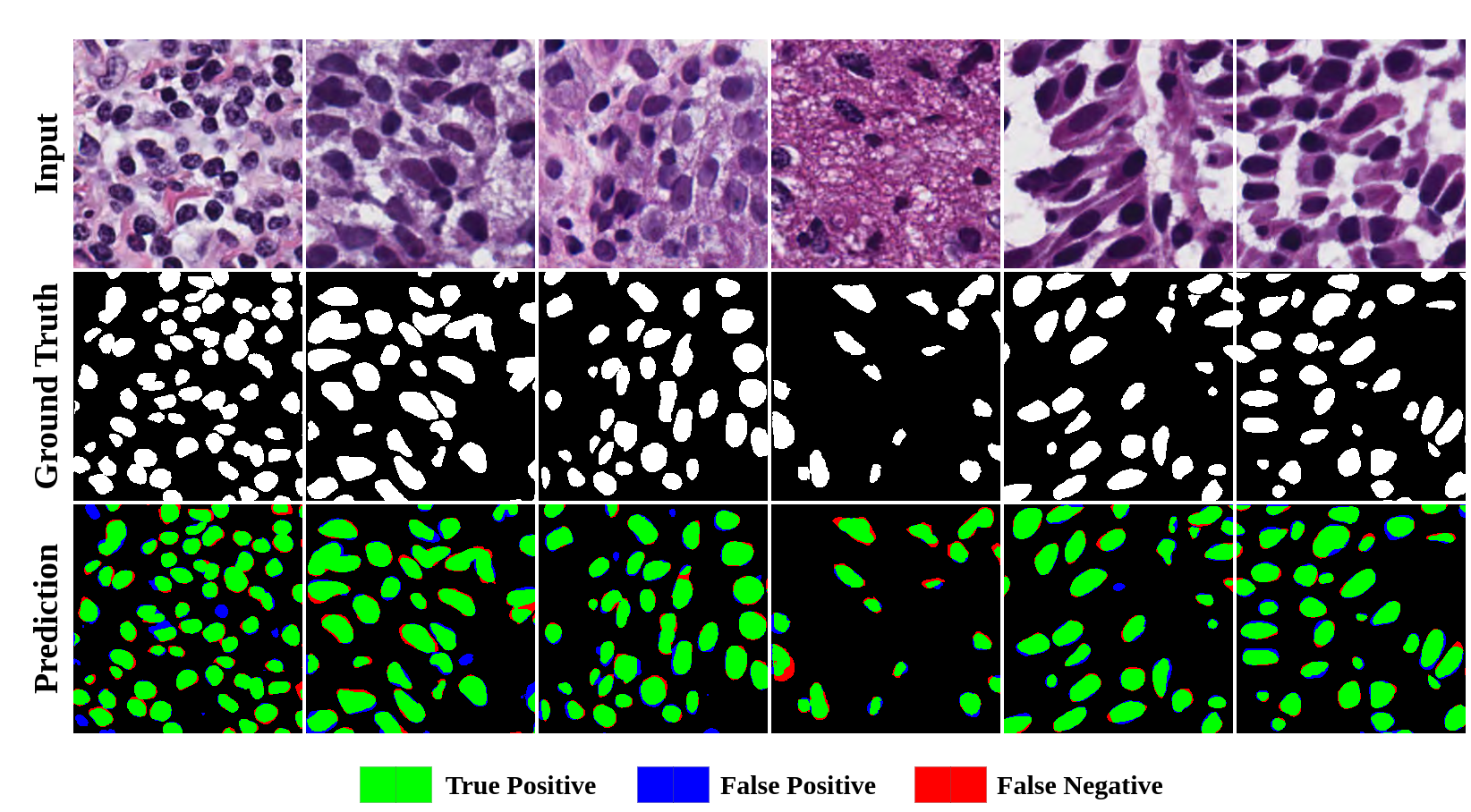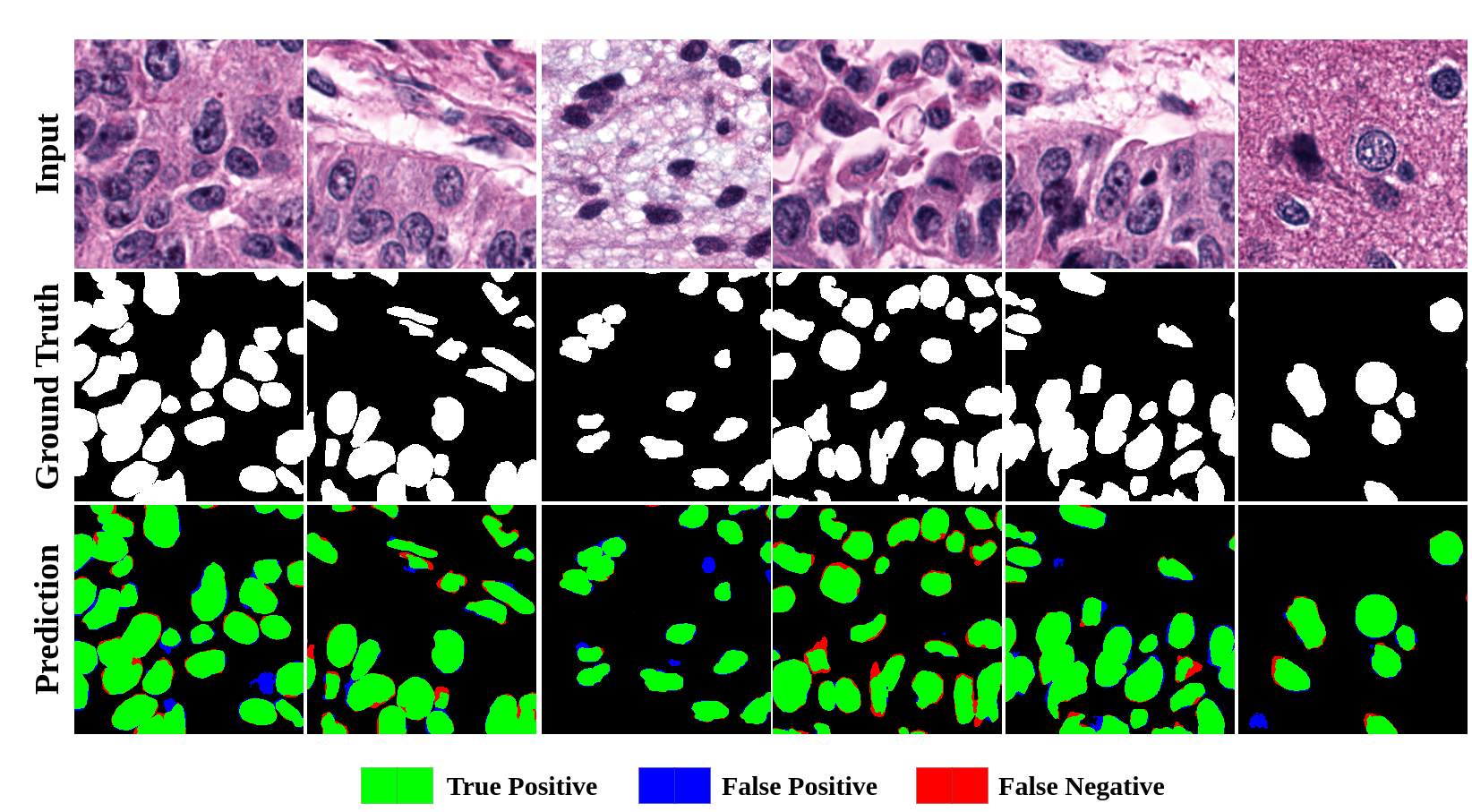- Enhances MBConv efficiency through the Zoom-Filter-Rescale (ZFR) strategy.
- Involves:
- Large stride at the entry expansion layer (Zooming).
- Large kernel-sized depthwise convolution operation (Zooming and Filtering).
- Rescaling spatial size using bilinear upsampling to compensate for downsampling (Rescaling).
- Increases receptive fields within MBConv by 8×.
- Decreases inference latency by approximately 30%.
- Extends the CSeg block by incorporating an improved global context (IGC) block for robust global context modeling.
- Increases AJI score of the nuclei segmentation on MoNuSeg 2018 dataset in a lightweight network by approximately 1.9%.
- Achieves improved performance with only a minimal computational cost.
- Incorporates Transformer encoder blocks in a tailored manner to a variant of the Sandglass block.
- Leverages strengths of both convolutional and attention-based mechanisms.
- Effectively captures fine-grained spatial information and comprehensive long-range dependencies.
- Stem block
- Enhances low-level feature extraction while mitigating the impact of noisy features in the model's initial skip connections.
For cloning the project run:
$ git clone https://github.com/mltraore/compsegnet.git
$ cd compsegnetInstall requirements using:
$ chmod +x install_dependencies.sh
$ pip install -r requirements.txt
$ sudo ./install_dependencies.shThe following datasets were used in experiments:
Processed versions of these datasets, along with the original versions, predicted masks, and a checkpoint sample for the MoNuSeg 2018 dataset, can be downloaded here. For automatic download, run:
$ chmod +x download_resources.sh
$ ./download_resources.shin the project directory.
- Note: The included predicted masks are actual CompSegNet architecture outputs, provided for qualitative comparison and further evaluation by the authors in their research.
To create the datasets yourself, use the prepare_dataset.py script:
# Get script usage info
$ python3 prepare_dataset.py --help
# Example usage
$ python3 prepare_dataset.py --dataset-path datasets/monuseg_2018 \
--image-size 1000 \
--validation-size 0.10 \
--reference-image datasets/monuseg_2018/train/images/1.tif \
--prepared-data-path datasets/prepared_datasets/monuseg_2018Use the train.py script in the project directory to train the model:
# Get script usage info
$ python3 train.py --help
# Example usage
$ python3 train.py --train-folder datasets/prepared_datasets/monuseg_2018/train \
--validation-folder datasets/prepared_datasets/monuseg_2018/validation \
--checkpoints-folder checkpoints/ckptsUse the test.py script in the project directory to test the model:
# Get script usage info
$ python3 test.py --help
# Example usage
$ python3 test.py --model-weights-save checkpoints/ckpts \
--test-set datasets/prepared_datasets/monuseg_2018/trainThis provides Dice Similarity Coefficient (DSC), Aggregated Jaccard Index (AJI), and Hausdorff Distance (HD) scores.
CompSegNet on MoNuSeg 2018 dataset
CompSegNet on MoNuSeg 2018 dataset
@article{traore2024compsegnet,
title={CompSegNet: An enhanced U-shaped architecture for nuclei segmentation in H\&E histopathology images},
author={Traoré, Mohamed and Hancer, Emrah and Samet, Refik and Yildirim, Zeynep and Nemati, Nooshin},
journal={Biomedical Signal Processing and Control},
volume={97},
pages={106699},
year={2024},
publisher={Elsevier}
}
This work is supported by TÜBİTAK (Scientific and Technological Research Council of Türkiye) (Project number: 121E379).
